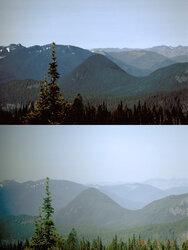Highbeam
Minister of Fire
Yes, my area requires stoves to be "epa certified" in order to burn them on "no burn days" (which are about 50% of days in winter including all of the previous week). So if I buy a new stove now I will be able to use it until 2020 when the regulations change and it will be no longer "epa certified" hence I will not be able to burn it on "no burn days" I am wondering if that means I should just comply with the future regs now. ( I guess that means buying the ideal steel stove).
Or just buying one that is now epa certified and in 5-8 years figure out what to do.
The stove you buy today that is EPA certified will always be EPA certified. Just because they tighten up those emission limits for future certifications does not mean that previously certified stoves will lose their certification. There would have to be a specific new type of certification for this newest cycle of emissions numbers. Perhaps called phase 2 certified. Your clean air idiots will have to decide whether they want to ban burning for phase 2 stoves at the same time as current EPA stoves. My clean air idiots currently lump all solid fuel burners into the pre-EPA stoves and the EPA certified stoves.
I suspect that the new stoves meeting a new and tighter requirement will have some recognition of that accomplishment on their permanent label. I even suspect that new stoves will have to meet that higher level in order to be certified as the previous threshold will no longer get you "certified". I do not expect that the clena air idiots will begin banning burning for certified stoves that did not meet this newest limit. It is possible of course but the infrastructure and laws are written to recognize certified stoves and I expect that will continue.
Just like car emission regulations. They are ever tightening. Running old cars is still legal.






